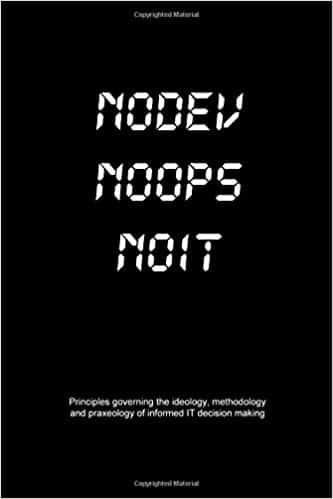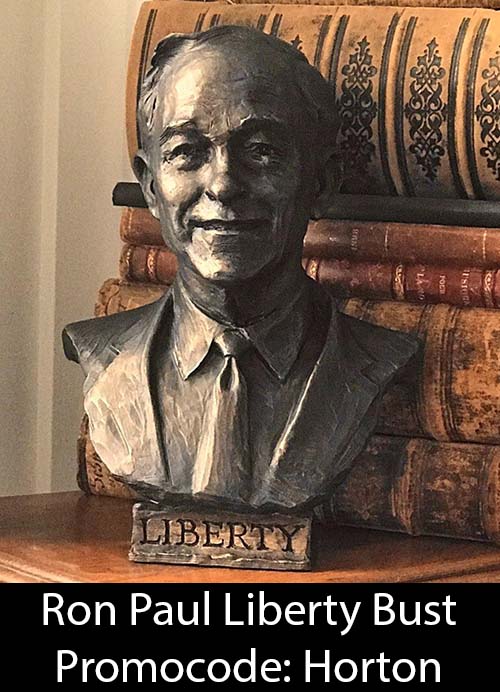by Col. Douglas A. Macgregor, ORBIS, January 2001
American foreign policy in the past century has frequently been shaped not by the realities confronted by diplomats and soldiers, but by an idealistic longing to remake the world in the United States’ own image. [1] The first American attempt to do so in the Versailles Treaty ended in tragic failure. The supposedly moral peace that concluded Woodrow Wilson’s “war to end war” actually perpetuated injustice and set the stage for World War II. [2] At the start of the twenty-first century, the moral imperative in U.S. foreign policy again compels American and allied troops to pursue idealistic goals in Bosnia and Kosovo long after the ideas that underpin those goals have become irrelevant and unattainable.
It is time to fix the problem with U.S. policy, not the blame. The United States and its allies must deal with the Balkans on terms its inhabitants understand and respect: power politics and fair agreements. All of the peoples who live on the territory of the former Yugoslavia deserve to survive and prosper within a just framework. But to create such a framework, the next president must understand that Europeans themselves, rather than Americans far removed from the context, must shape the path to regional stability. Furthermore, the emergence of Vojislav Kostunica as Serbia’s legitimate leader poses a new challenge to U.S. and allied policy in the region. European support for Kostunica and opposition to independence for Kosovo under Albanian leadership could reignite war in the Balkans unless the next administration adopts an approach that recognizes the legitimate aspirations of all the peoples that live in the former Yugoslavia.
If Americans and their NATO allies in uniform have learned anything from their experience in the Balkans and elsewhere in the last ten years, it is that diplomatic arrangements made in isolation from the political, social, cultural, and economic realities on the ground result in political objectives without any hope of success. For the next administration, this means recognizing that military power cannot artificially create multiethnic social structures and Western-style political institutions where the foundations for them do not exist and the rationale for long-term U.S. engagement is weak. If nothing is done to redirect the course of U.S. policy, Americans will confront more than violence in Kosovo or an open-ended commitment of U.S. military power. Without abandoning the attempts at social engineering that have dominated policymaking since October 1995, Yugoslavia will remain a catalyst for regional conflict, and the growing European backlash against American policy will further erode alliance cohesion and encourage isolationism in the United States.
The Bosnian Debacle
In 1995 the Clinton administration concluded that American military intervention was indispensable to any resolution of the Balkan crisis. European reluctance to intervene militarily to stop the Yugoslav conflict reinforced this attitude. When the Yugoslav army (Voyska Jugoslavska–VJ) failed to intervene to rescue the Bosnian Serb army from military defeat and to protect the 200,000 Serbs driven out of the Krajina by the Croat army in early August, President Clinton sought a diplomatic solution. The sudden emergence of a Croat military force capable of defeating the Bosnian Serb army on a level playing field at last seemed to offer favorable prospects to an administration that had touted principles of justice in foreign policy since taking office in January 1993, but had avoided involvement in Bosnia. [3]
After the shelling of a Sarajevo marketplace killed scores of innocent civilians on August 28, 1995, Clinton seized the opportunity provided by the Western public’s revulsion to employ American and allied air power on the side of the Croat and Bosniac armies. In early September the Bosnian Serb leaders, confronting seemingly unstoppable ground forces and a ferocious allied bombing campaign, signaled a readiness to talk peace. Clinton then suspended the bombing and left resolution of the dispute to the diplomats gathered at Dayton, Ohio. The result was an uneasy truce that ended the fighting before either side could win or lose the war.
This use of American military power in Bosnia is instructive. Power was not employed to win the Bosnian conflict outright or to achieve definitive settlement of disputes before or during negotiations. Rather, the bombing and subsequent occupation of Bosnia-Herzegovina by 60,000 NATO ground troops (half of whom were American) had two key objectives: to prevent a resumption of the fighting and ethnic cleansing, and to formalize the creation of a Muslim-dominated multiethnic Republic of Bosnia-Herzegovina.
From its inception, Bosnia-Herzegovina was an artificial structure whose claim to legitimacy depended on the presence of foreign troops and a steady influx of foreign money. Because Bosnia-Herzegovina had never been a nation, its newfound equality with other regional actors ran counter to the historic structure of interstate relations in Europe. In addition, at precisely the time when so many of the Balkan peoples rejected multiethnicity in the context of European cultural and ethnic integration, another myth took root in the minds of the Western public: that of a formerly happy, prosperous, and multiethnic Yugoslavia–as if Yugoslavia had suddenly descended into hatred and turmoil in 1992. It is much nearer the truth that the fraud of Serb political dominance–that is, Tito’s world of political gangsterism backed by the Serb-controlled secret police–collapsed into a sea of nationalist discontent that had been latent from the Yugoslav state’s inception. But the notion of stopping the fighting and “restoring ” a multiethnic status quo ante seized American imaginations and ultimately became the organizing imperative of the Dayton accords. [4]
While Americans harbored alchemical dreams of turning nationalist lead into multicultural gold in the Balkan laboratory, European leaders sought a solution that would end the fighting without changing territorial boundaries in the region. Fearful that Yugoslavia’s violent disintegration could set dangerous precedents in other European states with large minorities or even accelerate the exodus of culturally alien Balkan peoples to the prosperous states of the European Union, NATO’s Western Europeans continued to insist on the inviolability of the internal borders of the constituent republics of the former Yugoslavia. The result was a decision at Dayton to create the new nation-state of Bosnia-Herzegovina. [5] All ignored the reality that the wars of extermination waged since 1992 by various nationalist leaders seeking to carve out new states for themselves and their peoples had breathed new life into the older ethnic, cultural, and religious traditions that Tito had suppressed for fifty years. These points we re lost on the Western public, which concluded, once the conflict disappeared from nightly television reports, that the nasty ethnic war was over. The settlement reached through U.S. military and diplomatic action and without American casualties seemed a great achievement and became an important feature of the Clinton administration’s program to sell U.S.-led operations in the Balkans to Congress and the American electorate. Only American and allied troops on the ground in Bosnia periodically reminded the viewing public of NATO’s open-ended commitment there.
Bosnia, Five Years Later
Despite proclamations of progress towards Dayton’s goals, ethnic hatreds and organized crime still swirl just beneath the deceptively calm surface and gain strength from disillusionment with the artificial state of Bosnia-Herzegovina. Consistent with the trend since Tito’s death, democratic elections in the region have tended to reinforce separatism rather than encourage multiethnicity. In the April 2000 municipal elections that attracted the lowest voter turnout to date, the hard-line nationalist parties in the Croat-and Serb-controlled areas retained their political strength. Not even the so-called moderate parties in those areas advocate multiethnicity, despite their calls for economic and democratic reform. Only urbanized Muslims in two of the region’s largest cities demonstrate a willingness to support multiethnic government. Meanwhile, Sarajevo has purged its Slavic heritage and transformed itself into a “Muslim” city. For Serbs and Croats, the message is unmistakable. The “multiethnicity” imagined at Dayton means homogenization within an artificial Bosnian identity. Predictably, Belgrade and Zagreb remain much more powerful magnets for Serbs and Croats than does Sara-jevo [6].
When fighting erupted in Bosnia-Herzegovina during the early 1990s, 5.2 million people lived in the region. Of the roughly 2 million residents displaced during the war, the U.N. High Commission for Refugees reports that about 800,000 currently live in Bosnia-Herzegovina. Of those displaced persons, who previously lived as minorities in majority areas, very few have returned to their former homes because of the hostility and insecurity they would face there. The Clinton administration, while touting apparent successes in Bosnia, fails to mention that those few refugees who do return to areas in which they are minorities are tolerated by the local majorities only because they are mostly over the age of fifty, have no children, and consequently pose no threat to the dominant group’s control. In any case, if all minorities attempted to return to their homes, NATO would have to quadruple its troop presence to protect them. This would be politically untenable because it would not only prevent the gradual withdrawa l of NATO troops, but also put U.S. troops at increased risk of casualties. The billions of dollars invested by the international community in Bosnia-Herzegovina have neither changed the essential character of the Tito-era socialist economy nor fostered self-sustaining prosperity. In sum, neither the artificial state of Bosnia-Herzegovina nor the tenuous peace that now holds would be viable without thousands of NATO troops and massive foreign aid.
The Kosovo Debacle
Historians note that it is from the festering humiliations of great peoples that arrogant falsehoods and propaganda spring. The violent dissolution of Serb-dominated Yugoslavia combined with the ambitions of political demagogues to provide Serb and Albanian nationalism with a powerful inspiration in Kosovo. By 1998 Kosovo was already a political, economic, and security catastrophe for Belgrade, and President Slobodan Milosevic’s popularity among his Serb constituents had sunk to an all-time low. It was not implausible to suggest that the Miosevic regime would eventually have been destroyed by events in Kosovo had NATO not inadvertently rallied the Serb nation behind the president.
Belgrade’s control over Kosovo was doomed once the Yugoslav military began to resist Milosevic’s attempts to use it to implement policy in Kosovo. Serb police officers treated an assignment to Kosovo as a virtual death sentence, and hundreds of officers ordered to Kosovo in 1998 simply refused to deploy. General Momcilo Perisic, the Yugoslav army chief of staff, urged Belgrade to limit the use of force in Kosovo and resisted Belgrade’s pressure to employ VJ formations in direct action against the Albanian insurgents. Among the civilian population in Kosovo, order broke down as Kosovar Albanian refugees fled to the Former Yugoslav Republic of Macedonia (FYROM) and thousands of Kosovo’s Serbs left for Montenegro and Serbia. While these events did not escape the notice of NATO’s European leaders, their reactions were tempered by awareness of the Kosovar origins of their continent’s most dangerous criminal gangs and allegations of Kosovo Liberation Army (KLA) links to terrorism and organized crime. Thus, most Eu ropean leaders greeted American proposals for air operations against the Serbs in 1998 with considerable skepticism. [7] In fact, some European ambassadors to NATO’s North Atlantic Council (NAC) were reluctant to consider bombing unless both KLA and VJ forces in Kosovo could be attacked from the air. Since this was beyond the capabilities of U.S. and allied air power, the idea was never taken seriously. However, in the view of the U.S. government, the KLA was changing from a terrorist organization into a legitimate irregular army and was increasingly portrayed by U.S. leaders as a group of “freedom fighters” or “liberators.” Still, a consensus for military action in the NAC did not yet exist.
In the fall of 1998, the NAC acquiesced in U.S. and British proposals to assemble allied air power in Italy in order to pressure the Yugoslav government. But the preferred plan was Ambassador Richard Holbrooke’s arrangement with Milosevic, which introduced a U.S. and European observer mission into Kosovo from the Organization for Security and Cooperation in Europe (OSCE), because that option supported the OSCE’s goal of reintegrating Yugoslavia into Europe rather than attacking it. At the time, NATO’s European members made it clear that only a significant outrage committed by Serb forces against the Albanian population would move them to intervene, and if then, only from the air.
That attitude changed after press reports of the massacre of Kosovar Albanian civilians by Serb police in the small town of Racak evoked memories not just of the Holocaust, but of the Bosnian Serbs’ recent atrocity at Srebrenica. Military action now had the support of horrified Europeans, who disregarded reports of numerous KLA violations of the cease-fire regime negotiated by Holbrooke. Still, one more drama had to play out before the air campaign could begin-Rambouillet.
A discussion of what occurred at Rambouillet is beyond the compass of this essay, but its results are not. General Klaus Naumann, chairman of the NATO Military Committee in Brussels, warned the NAC that air strikes should not be undertaken without the readiness to conduct offensive operations on the ground. His counsel was ignored, as was the historical lesson that international pariahs such as Milosevic or Saddam Hussein cannot be bombed out of office. Instead, the experience in Bosnia in 1995 buttressed confidence in Brussels and Washington that a series of swift and violent air strikes would, within three or four days, demonstrate to the Belgrade government the futility of resistance to NATO and lead it to pull back its forces. The OSCE observer mission was withdrawn, and NATO’s leaders agreed to attack the Serbs–provided NATO ground troops were not involved. These leaders apparently disregarded the criticality of NATO ground forces because of domestic political considerations. Clearly, the White House s till felt keenly the backlash from U.S. Army casualties in Somalia. [8] Moreover, the U.S. experience with air operations in the years since Desert Storm might have suggested to policymakers in Brussels and Washington that as long as military operations were brief and cost the lives of no NATO pilots, the public was unlikely to become deeply concerned.
Usually, when the United States contemplates the use of military power, the national command authorities take care to ensure that the military action corresponds to the U.S. interests under threat. In this case, the fit was poor. The stated objectives of the air strikes were to stop Serb aggression against Kosovo’s population, induce Serb compliance with the provisions of the Rambouillet document, and compel the Yugoslav army and police to withdraw from Kosovo. In the words of the U.S. secretary of defense, the objective was “to degrade and damage the military and security structure that President Miosevic has used to depopulate and destroy the Albanian majority in Kosovo.” [9] The decision to intervene preceded development of a coherent strategy to address the range of issues from specific political-military objectives to conflict termination. As the air campaign played out, it became clear that NATO’s planes could do little from 15,000 feet to influence events on the ground in Kosovo. In the absence of NAT O ground forces positioned to invade, the widely dispersed Yugoslav forces presented poor targets for aerial attacks. In addition, the high personal and political stakes for Milosevic made him willing to tolerate a significant amount of destruction of Yugoslavia’s military and civilian infrastructure. For the Yugoslav president, yielding to NATO meant not only that he would have to terminate VJ operations in Kosovo and surrender another portion of Yugoslavia’s sovereign territory, but also that he would enter Serb history as the man who gave away the venerated medieval site of Serbia’s last stand against the hated Muslim Turks.
Regardless of NATO leaders’ expectations at the onset of the air campaign on March 24, 1999, Serbia and its military quickly rallied behind Milosevic. Though equipped with 1970s technology, the VJ reacted to the U.S.-led air campaign with considerable skill and determination, and by April 1 had nearly completed its offensive to crush the KLA. Though not completely eradicated from Kosovo, the KLA was never an effective opponent for the VJ after that date. Air strikes under more favorable weather conditions in late April and May had little or no effect on the dispersed and expertly camouflaged Yugoslav ground forces in Kosovo, but did destroy bridges, factories, power lines, and communications systems that will ultimately require years, and billions of Western dollars, to repair.
Five days after the air attacks began, the expulsion of nearly 800,000 Albanians from Kosovo started in earnest. The Western media’s reporting of this event persuaded millions of Americans and Europeans that rational discussion and compromise were impossible with the Serbs. Although this situation would later change, in early April the images of destroyed homes and fleeing Albanians seemed to validate the air operation’s broader purpose of punishing the Serbs.
However, from the Serb viewpoint, sound military reasoning justified the expulsions that had been characterized by the media as ethnic cleansing. Faced with a population that concealed and supported the insurgent KLA, the Yugoslav forces did exactly what U.S., French, and British forces have done in counterinsurgency operations: they expelled the population and removed the insurgency’s base of support. From a military perspective, the effects were highly beneficial to VJ operations. First, Albanians equipped with cell phones could not easily observe and report the presence of Yugoslav forces to NATO if they were sitting in Albania or FYROM. Secondly, the flood of refugees into potential staging areas for NATO ground forces in contiguous states made offensive ground operations nearly impossible and diverted NATO military assets into humanitarian operations. Lastly, because of the fears among Orthodox Slays in FYROM of an ethnic Albanian uprising, these actions punished the FYROM government for allowing NATO t o turn its country into a platform from which to attack Serbia.
As the flood of refugees ebbed and the air attacks dragged on, European and American leaders realized that the military operation could last for months or even years. At this point, it is again instructive to consider the use of American military power. Because few Americans or Western Europeans knew much about Kosovo, and because none had been told why their countries’ soldiers, airmen, or marines should die to liberate it from Belgrade’s control, avoidance of casualties preoccupied allied leaders. Their concern was evident not only in the refusal to employ ground forces against the VJ, but also in the priorities of the air campaign. Among the “measures of merit” provided by General Wesley K. Clark on March 24, 1999, to the U.S. and allied air forces, the first was not to lose any of their own aircraft. Only in second place came the directive to stop the Yugoslav army and police aggression against Albanians in Kosovo. The third priority was to protect allies and friends from attack by the Federal Republic o f Yugoslavia and maintain alliance cohesion. [10]
The expectation among top leaders that the campaign would last just three or four days resulted in the initial selection of only fifty-one targets, focused on integrated air defense systems and command and control facilities. Very soon, however, it became obvious that the Yugoslav air defenses would prove more difficult (if not impossible) to locate and destroy. VJ troops continued to reinforce and supply their forces in Kosovo without interruption. Yugoslav air defenses, bad weather, complex terrain, and the limitations of target-acquisition technology mitigated the effects of relatively high altitude bombing. As a consequence, NATO had to increase the intensity of operations so long as Miosevic refused to capitulate to its demands. Without the ability to shape events in Kosovo, the air operation began to focus primarily on punishing the Milosevic regime, which required identifying new targets for attack throughout Yugoslavia. By the end of the air operation, slightly over one thousand targets had been appr oved for Kosovo and the Federal Republic of Yugoslavia, an area the size of Ohio. However, allied air forces often hit targets primarily because they were the only ones that had received the green light from President Clinton, key alliance leaders, and the NATO Council. This unwieldy approval process placed an enormous constraint on the campaign.
One obvious effect of the decision to bomb in and around Serb-populated areas, however, was to increase the likelihood of collateral damage and civilian casualties, and with it the probability that an erratic missile or targeting error would weaken the already-tenuous public support in Europe and the United States. NATO efforts to suggest that the few errors that did occur were insignificant when compared with the accuracy of most of the strikes fell on the deaf ears of television audiences appalled by images of “accidental” destruction.
It was perhaps inevitable that European and American public opinion would eventually oppose military action against a country that had never in its history threatened the United States or NATO. By the end of May 1999, more than 80 percent of Americans polled by CNN concluded that the air campaign should end. [11] The evils that the air strikes were theoretically launched to avert had been overshadowed by the suffering that they inflicted on the people of Serbia and Kosovo. [12] At this point, however, the policymakers in Washington and Brussels who had initiated the conflict discovered that they lacked the power to stop it. [13] Faith in the efficacy of bombing, born of the ostensible success of the campaign in Bosnia, turned out to have been misplaced. For American military planners, the air operations in May 1999 stirred memories of Operation Rolling Thunder in 1965. Officers even wondered aloud if the U.S. Army would be ordered to prepare for a ground war, as it had been when the bombing offensive against the Vietnamese Communists failed. At the same time, European leaders urgently sought a diplomatic solution before a loss of consensus in the NAC jeopardized military action against Belgrade. In spite of Herculean efforts by the U.S. national command authorities, key European leaders, and General Clark, the third measure of merit–alliance cohesion–was now at risk.
Fortunately, on the seventy-eighth day of the air campaign the Belgrade government agreed to withdraw its forces from Kosovo. The reasons for this decision were more self-evident than realized at the time. The withdrawal of Moscow’s support for Belgrade under great pressure from the United States left Serbia without any hope of assistance in its bid to retain control of Kosovo. At the same time, the destruction of Serbia’s meager economy, whose output in 1998 was less than two-thirds as great as that of Fairfax County, Virginia, made further resistance impossible. Belgrade could have perhaps retained Kosovo, but without external support the Serb population would have starved or frozen during the following winter. Finally, Moscow warned Belgrade that it could not rule out a future U.S.-led ground offensive to drive the VJ out of Kosovo.
One of the most undesirable consequences of NATO’s air campaign–and one that European leaders had sought to avoid–was to make the United States and the KLA de facto allies in the offensive to expel Yugoslav troops from Kosovo. The stridently anti-Serb rhetoric emanating from Washington and Brussels before and during the air campaign left little doubt that the NATO powers would enter into peace negotiations only on their own terms. In addition, the indictment of Miosevic as a war criminal encouraged false hopes and dangerous aspirations among the KLA for a “Greater Albania.” For the KLA, the arrival of NATO forces on Yugoslav soil seemed to promise the means to drive out the few remaining Serbs and establish a close relationship with Albania itself.
Although the KLA publicly vowed to disarm in accordance with the agreement negotiated on behalf of NATO by Lieutenant General Sir Michael Jackson, commander of the Kosovo force (KFOR), few of the Kosovar fighters actually complied. In meetings between the KLA leadership and KFOR, the rebel group explicitly portrayed itself as the national security force. Although the KLA did initially withdraw from some areas and surrender some weapons to NATO, Western observers never considered the Kosovar force to have truly demobilized, nor had they ever expected that the KLA would voluntarily forfeit its military power. [14] It is customary for Albanian men to be armed, and it is worth noting that in fifty years of rule, the Serbs seldom tried to disarm the entire Muslim Albanian population of Kosovo. For NATO to undertake this task would have meant immediate war with the KLA in June 1999.
The Kosovo Protection Corps (KPC) was supposed to address this problem in part by supplanting the KLA and satisfying the need for the trappings of an armed force. Naturally, the Albanians’ desire for a national army stimulated much controversy for KFOR and the U.N. transitional authority, especially since the question of Kosovo’s legal status remained unresolved and possession of an army would provide de facto evidence of sovereign statehood. Theoretically, the KPC was to conduct humanitarian relief and reconstruction operations and consist largely of unarmed firemen, construction crews, and rescue teams. Today, the KPC’s true character varies in practice from area to area within Kosovo, but Kosovar Albanians regard the KPC as an army in waiting. Among themselves, KPC leaders still address each other by military rank, even though NATO officers do not recognize these ranks. It is clear that if the United Nations and NATO fail to meet Albanian expectations, core elements of the KPC will form the cadre of a res urrected KLA.
As in 1995, the use of violence itself engendered new obstacles to peace. [15] No amount of international goodwill or economic assistance will soon, if ever, overcome the hostility between Serbs and Albanians that the air operations only intensified. It should therefore come as no surprise to find that Kosovo’s Albanian leaders press their strategic advantage by orchestrating violence in places like Kosovska Mitrovica. In Pristina during June and July of 1999, an organized campaign of murder and terror sought to drive Serb civilians out of the city. After the torture and murder of three Serb faculty members at the university in Pristina, the plan worked. It is equally unsurprising that drug trafficking, smuggling, and prostitution have returned to the province with renewed strength because, especially in Kosovo and Albania, the income they generate translates readily into political power. [16]
Kosovo, Two Years Later
What, then, is the situation of American and allied soldiers in Kosovo today? The reality can be grasped by a comparison to Britain’s peacekeeping role in Northern Ireland. Few people now remember that the minority Catholic population initially welcomed British troops as protection against the Protestants who tried to burn them out of their homes. But within two years of their arrival, British soldiers started to die at the hands of the Irish Republican Army. For the Orthodox Christian Serbs whose friends and relatives are killed by Muslim Albanians, the failure of the allied force to protect them makes NATO at best an occupier and at worst an enemy. To Kosovar Albanians who seek to rid their territory of Serbs and achieve total independence from Yugoslavia, NATO troops are betraying the Albanians’ trust, making them legitimate targets for rogue elements of the KLA. [17]
In the United States, the finger pointing has begun. [18] Republican and Democratic senators raised questions about General Clark’s order in March 2000 to send U.S. troops into Kosovska Mitrovica, where sixteen French peacekeepers were wounded trying to halt street clashes between Albanians and Serbs. Responding to White House concerns, General Hugh Shelton, the chairman of the Joint Chiefs of Staff, subsequently instructed General Clark not to send significant numbers of American troops outside their sector “except in emergencies.” [19] After spending $4 billion to bomb Serbia, many people question the current role for U.S. troops on the ground in Kosovo. The explanation is complex, but critical to an understanding of how U.S. and allied military power can be usefully employed in the future.
It is the business of statesmen and diplomats to make the use of force unnecessary. But if military power is used, they must ensure that the political-military objectives are attainable and that the resulting settlement is viable. This is especially critical in coalition warfare because, over time, each ally thinks only of itself. Kosovo is no exception. The U.N. Security Council resolution that suspended the fighting in Yugoslavia states simply that Kosovo will become a self-governing, autonomous province within the territory of Yugoslavia under U.N. administration. It does not provide a clear and unambiguous cloture that would allow for NATO’s eventual disengagement and withdrawal.
Nine months after intervention on the ground in Kosovo, U.S. and European military leaders began privately to think that NATO’s military strength was being squandered in pursuit of unattainable multiethnic social and political structures. Soldiers in the region know that throwing money at the problem is not enough. [20] Despite public pronouncements to the contrary, none of the key NATO players is really willing to invest the time, troops, or resources necessary to preserve the problematic status quo in Kosovo–and Bosnia. The reasons for this attitude have less to do with the nobility of NATO’s purpose in the Balkans than with domestic concerns that limit the duration and power of the military intervention. [21] In the absence of a significant threat to their national survival, most of the mainstream European political parties favor significant cuts in their respective national defense budgets, and peace-support operations in the Balkans have done nothing to change that priority. Few Americans understand th e complexities of the Balkan region, and their representatives in Congress have no political incentive to provide explanations. Without a regional solution that rests on the foundation of European consensus and the mutual interests of European states, the inevitable decline of the U.S. military presence in the region will produce a gradual redistribution of power that over time could doom the Balkans’ Muslim minorities. The question for Europe and the United States is how to avoid this outcome. [22]
From a military standpoint, an attractive model for NATO’s peace-support operations is the peacekeeping operation in the Sinai that resulted from the Camp David accords, which costs just $50 million a year, has the support of the United States, Egypt, and Israel, and involves 15,000 troops. By comparison, the current multinational force in the Balkans requires 100,000 troops and far greater costs. A crucial difference is that the conditions lying at the heart of the Balkan conflict–intermingled populations that refuse to coexist in peace–keep a Sinai-type solution beyond the reach of NATO and the United Nations. Successful peace-support operations in the Sinai depended upon a policy separating Israelis and Egyptians.
To date, the U.S.-led alliance has not met the challenge of restoring stability in a region where so-called peace settlements are merely facades behind which the local parties prepare for future hostilities. To understand this failure, three critical observations are in order. First, at some point in their struggles to become nations, most peoples–including those of Europe and North America–have engaged in the horrific practices of ethnic cleansing and population exchanges. Simply put, the Serbs, Croats, Bosniacs, and Albanians are now building their own nations through a process well known to every modern nation-state.
Secondly, the European Union did not make its own internal boundaries irrelevant after World War II by using American military power to enforce multiethnicity. Rather, the presence of U.S. military power in Cold War Europe guaranteed the survival and economic development of the European peoples separately within the territorial boundaries of Europe’s nation-states. Today, Europe prospers, and German, French, Italian, and Polish youth regard the Second World War as the modern equivalent of Europe’s Dark Age. If NATO’s military strength were to be employed in a similar fashion today, the attitude of Serbs, Croats, Bosniacs, and Albanians might resemble that of the rest of contemporary Europe in thirty or forty years.
Thirdly, the U.S. State Department advocates a political settlement in the Middle East based on ethnically “pure” states for one simple reason: it will eventually offer the only chance for a fledgling Palestinian state to deal with the hard task of becoming politically viable before becoming multiethnic. A similar policy, along with similarly unlimited patience, could also be applied to the Balkans.
A Way Forward
These points suggest a solution that will not please everyone, but one that nevertheless promises to be more realistic and stable than the current approach. The people who live in the former Yugoslavia should decide their future at the polls, even if their elected representatives vote for partition from Bosnia-Herzegovina or Kosovo. Substituting a confederation for the federation called for in the Dayton accords would preserve the independent existence and future prosperity of all the Balkan peoples within their own polities, thereby promoting long-term stability. By contrast, a federal structure centered on Sarajevo or Pristina or Belgrade would inevitably subordinate minority populations to majority rule and threaten the survival of one or more ethnic groups. Removing the requirement for a multiethnic federal state would also rob the region’s hard-line nationalists of the issue that sustains their political support.
This solution could affect the peoples of the former Yugoslavia in numerous ways. For the Serbs in Bosnia, Montenegro, and Kosovo who loathed Milosevic, Vojislav Kostunica’s political triumph and nationalistic aspirations will likely make unification with Serbia more appealing than ever. Resurgent nationalism, in turn, could increase Bosnian Serbs’ determination to confederate with Belgrade rather than with the Bosniacs, since the latter option would be seen as violating the unity of Yugoslavia. In Montenegro, Kostunica may be unable to contain the drive for independence in any case.
For Bosniac Muslim leaders, the confederation proposed here would require that they accept the reality that instead of outright sovereignty, they can enjoy regional independence, including their own courts, judiciary, police, and elected government. Because the Bosnian federation has been an American client state since its inception, the new confederation would require that the United States help the Bosniacs fashion a more realistic future.
Given the desire of the new Croatian leadership to integrate into the European Economic Community and NATO, there is every reason to believe that Zagreb would uphold a confederation that encompasses both Muslims and Croats in Bosnia. Such an arrangement would also be much easier to achieve than a federal system that subordinates non-Muslims to Muslim rule. For the Croats living in Herzegovina, who until recently were allowed to vote in Croatian national elections, confederation with the Muslims would not preclude their membership in the larger Croat nation. In fact, Croat independence from Sarajevo within a confederation with Muslims would give the new leadership in Zagreb latitude in its dealings with compatriots in Herzegovina as well as a stake in the success of the new political arrangements.
For the Albanians in Kosovo, disengagement from the Yugoslav federal state through confederation could offer real separation from the Serb-dominated Yugoslav state they despise and the possibility of closer cooperation with Albanians in contiguous states if they so desire. In return for this solution, Kosovo’s emerging elected leaders would recognize the Serb minority’s property and civil rights within the Serbs’ respective areas. This solution could also resolve tensions stemming from Kostunica’s commitment to Yugoslavian unity and from the European Union’s strong opposition to an independent Kosovo. In the absence of some guarantee that they will not be dominated by Serbs within Yugoslavia, Kosovar Albanians may press harder than ever for full independence and could even resort to armed action against U.S. and allied troops. [23] Kosovo’s successful disengagement from Belgrade’s control through confederation would also set a precedent for nonviolent conflict resolution that could prove critical to long-ter m stability in FYROM. How long the Muslim Albanians in that country will want to remain part of a larger Orthodox Slav state is unclear. But if at some point the Albanians in FYROM decide to change their political status in FYROM and confederate themselves with either the Orthodox Slays or their cousins in Kosovo, this should occur without violence.
All of these points suggest that Western leaders must acknowledge the legitimate nationalistic aspirations of all parties without demonizing the Serbs or Albanians. It also means that asking Kostunica to compromise with the West on Montenegro’s independence or Kosovo’s long-term future outside of Yugoslavia will require flexibility from the West on the question of the Bosnian Serbs’ probable desire to confederate with Serbia.
Simply accepting the will of the people at the ballot box is not all that is required. Struggles for control of “hotspots” like Brcko and the Gorazde corridor in Bosnia or the Trepca mine complex in Kosovo will have to be resolved by the Contact Group nations (France, Germany, Italy, Russia, the United Kingdom, and the United States) in consultation with the regional leaders who emerge from the elections. The wishes of people who voluntarily opt to live in any one of the new states will have to be respected. But ending policies that force people into a form of coexistence they would otherwise reject could transform NATO’s peacekeeping role in the Balkans. Instead of continuously dealing with a multitude of local power struggles, massive internal social dislocation, and competing organized crime syndicates, all of which require widely dispersed and vulnerable ground forces, NATO could focus simply on preventing conflict between the new states. Peace-support operations would thus be based on the assumption tha t formerly warring states have agreed to NATO’s assistance to help them live in peace and pursue economic prosperity. Smaller contingents of U.N. and NATO ground forces, reinforced by air power, would remain along the territorial boundaries to ensure unobstructed travel between the entities. [24] In the absence of ethnic confrontation, the United Nations could work to secure economic and political development while international law-enforcement agencies turn their attention to the real threat to prosperity and the rule of law in the region: organized crime.
Power and Principle
In the fall of 1876, the disputed results of the U.S. presidential election threatened to revive the war between North and South. President Ulysses S. Grant conferred with his closest military advisers, Generals William T. Sherman and Philip H. Sheridan, and outlined a compromise solution. The Republican candidate would succeed Grant as president on condition that the U.S. Army end its occupation of the South and halt Reconstruction. Sheridan, adamantly opposed, swore that the Democrats would not win at the ballot box what they could not win on the battlefields of the Civil War. He went on to insist that with a million bayonets the South could be compelled to accept the rule of federal law and view African Americans as equals. Sherman, however, supported the compromise, saying: “No matter what change we may desire in the feelings and thoughts of people in the South, we cannot accomplish it by force. Nor can we afford to maintain there an army large enough to hold them in subjugation.” [25] Grant listened to Sherman, and his decision averted a resumption of civil conflict. Echoing a similar sentiment, General John Jumper, the commander in chief, U.S. Air Forces Europe, stated in September 1998 that bombs and missiles would not solve the problem on the ground in Kosovo, and cautioned that there would be “no easy answers in Kosovo.” [26] Military power has its limits.
This is not an argument against military intervention or peace-support operations. On the contrary, the use of force to establish basic law and order is a fundamental prerequisite to any form of successful civil administration, without which an early return to peace and stability is impossible. Since this type of military intervention is characterized by interdependence between political and military leaders, it requires clear goals and attainable objectives. However, the use of military power in the context of any unclear and self-deceptive policy, regardless of its intent, is wasteful and potentially dangerous.
Today, it is hard for some to understand how American forces ended up in the Balkans, a region often perceived as an exclusively European concern. What they do not understand is that Americans, not Europeans, created the situation that exists today in Bosnia and Kosovo. [27] The United States adopted a course of action that NATO allies eventually had to support. As former national security adviser Anthony Lake said after his meetings with NATO allies to press for military action in Bosnia in August 1995, the “big dog had barked.” Until recently, most European states were comfortable with America’s leading role in European affairs. However, “bombing for humanitarian purposes” and committing NATO military power to well-meaning but unattainable political goals has led many Europeans to question this approach. [28] Since 1996, Clinton administration officials have argued that military intervention in the Balkans would both preserve NATO’s collective defense organization and create a new military instrument to ex tend stability and security to the rest of Europe. In retrospect, many Europeans are beginning to think that U.S.-led intervention disregarded the political morality that stems from respect for the interests of other nations. Americans should not miss the point that European discomfort with operations in the Balkans has reinvigorated the formerly moribund European strategic defense identity. [29]
In the end, the real measure of whether the Clinton administration made the right decision to involve the United States and NATO in the Balkans will be determined not by good intentions in 1995 or 1999, but by results. If fighting eventually resumes in the former Yugoslavia because American leaders insist on an unrealistic political framework for the region, then history will judge the United States harshly. In fact, the artificial stability created by NATO military power in the region is reminiscent of J. F. C. Fuller’s comment on the aftermath of World War I: “Our civilization was unable to make peace, because it had forgotten how to make war. War had lost its significance, and when the cease-fire sounded, its meaning monopolized its end. All that happened was, the conflict continued in another form; therefore, there could be no peace.” [30]
But the most serious repercussions of the Balkan intervention may turn out to extend far beyond that remote peninsula. Frustrations with the region’s seemingly intractable problems may convince U.S. policymakers that intervention is pointless, that Fortress America should revert to splendid isolation. At the same time, delusions about the recent war with Belgrade may suggest that the high-tech U.S. military’s overwhelming superiority allows leaders in Washington to pursue goals, however muddled, with impunity. [31] If either or both of these interpretations become widespread, the United States risks losing more than the confidence of its allies. The United States is and must remain a European power. But will European security and U.S. strategic interests fall victim to imperious and impulsive decision making, or will they thrive under reliable American leadership?
Douglas A. Macgregor, a U.S. Army colonel, served from November 1997 to December 1999 as the chief of strategic planning and director of the Joint Operations Center, Supreme Headquarters Allied Powers, Europe. In 1995 he developed the zone of separation that became part of the Dayton framework agreement. He is currently a research fellow in the Institute for National Strategic Studies National Defense University in Washington, D.C. This paper does not reflect the views of the National Defense University, the U.S. Army, or the Department of Defense.
(1.) The author thanks Ambassador Robert Oakley; Col. William R. Phillips, U.S. Army; Col. Richard Roan, U.S. Marine Corps; Steven Meyer, National Defense University; Patrick Balestrieri, SHAPE; Lt. Col. Scott Bethel, U.S. Air Force; Lt. Col. Jerry Cummings, U.S. Army; Maj. Mark Elfendahl, U.S. Army; Maj. Simon Underwood, British Army; and Capt. Ray Eiriz, U.S. Army, for their recommendations and suggestions.
(2.) Michael Howard, War and the Liberal Conscience (New Brunswick, N.J.: Rutgers University Press, 1994), p. 84.
(3.) Ivo H. Daalder, Getting to Dayton. The Making of America’s Bosnia Policy (Washington, D.C.: Brookings Institution Press, 2000), p. 123.
(4.) Richard Holbrooke, To End a War (New York: Random House, 1998), p. 363.
(5.) Ibid., p. 241.
(6.) Jeffrey Smith, “Outside Efforts Do Little to Mend Fractured Bosnia,” Washington Post, Jan. 23, 2000. Also see Alex Djilas’s response to Noel Malcolm, “Djilas Replies,” Foreign Affairs, Jan./Feb. 1999, p. 138; and Misha Glenny, The Balkans, Nationalism, War and the Great Powers, 1804-1999 (New York: Viking Press, 2000).
(7.) Ariane Barth et al., “Das Geschaft ist alles: Wie sich Albaner-Clans mit der italienischen Mafia arrangierten” (Business is everything: How Albanian clans came to terms with the Italian mafia), Der Spiegel, no. 31, 1999, pp. 43-67. Current fundraising for the KLA is believed to center on the International Islamic Front, founded by Osama bin Laden, the Saudi terrorist leader in Afghanistan, which has a wing in Britain. See David Bamber and Chris Hastings, “KLA Raises Money in Britain for Arms,” Daily Telegraph (London), Apr. 23, 2000.
(8.) John Barry and Evan Thomas, “The Kosovo Cover-up,” Newsweek, May 15, 2000.
(9.) House Armed Services Committee, Hearing on United States Policy toward Federal Republic of Yugoslavia, Statement of Secretary William Cohen, 106th Cong., 1st Sess., Apr. 15, 1999, HASC 106-13.
(10.) Statement on Kosovo issued by the heads of state and government participating in the meeting of the North Atlantic Council in Washington, D.C., Apr. 23-24, 1999. Press Communique S-1 (99) 62, Apr. 23, 1999, pp. 1-3.
(11.) According to the Gallup/CNN/USA Today poll results released on May 26, 1999, 82 percent of Americans polled supported the idea of temporary suspension of air strikes in order to reach agreement through negotiation. Only 40 percent supported the use of American ground forces, down from much higher levels of support recorded in April. See “Poll Releases: May 26, 1999, Support for U.S. Kosovo Involvement Drops” (http:// www.gallup.com/poll/releases/pr990526.asp).
(12.) Edward N. Luttwak, “How a Splendid Little War Failed,” Los Angeles Times, Mar. 23, 2000.
(13.) Fred Charles Ikie, Every War Must End (New York: Columbia University Press, 1991), p. 85.
(14.) At the invitation of the KFOR commander, Lt. Gen. Sir Michael Jackson, this author visited the sites where those weapons turned in by the KIA were stored. In most cases, the surrendered weapons were old and in poor condition, many dating back to World War II. Modern automatic weapons remain under KLA control today. KFOR authorities were well aware of this fact and reported this to the Supreme Headquarters Allied Powers, Europe (SHAPE).
(15.) Bernard Edinger, “Analysis–Kosovo Crisis Looks Dim at Sharp Edge,” Reuters, Feb. 17, 2000.
(16.) See Norbert Mappes-Niedek, “Mehr ein Sumpf des Verbrechens als eine Insel der Stabilitat” (A swamp of crime rather than an island of stability), Der Standard (Vienna), June 12, 2000, which outlines the dramatic upsurge in prostitution, heroin trafficking, and smuggling and notes that Albanians have committed 1,027 murders in the months since NATO’s occupation of the province began in June 1999.
(17.) Elena Becatoros, “Albanians Lose Trust in Peacekeepers,” Associated Press, Feb. 19, 2000.
(18.) Elaine Grossman, “US Military Debates Link between Kosovo Air War, Stated Objectives,” Inside the Pentagon, Apr. 20, 2000, P. 1.
(19.) While not totally prohibited, all out-of-sector operations by U.S. forces must have prior approval by the chairman of the Joint Chiefs. The U.S. components of the Strategic Reserve Force do not require such prior approval, but during the recent Dynamic Response exercise the U.S. exercise area was altered late in the planning to ensure that U.S. forces remained in their own sector.
(20.) Jason Sherman, “Not There Yet,” Armed Forces Journal International, Aug. 2000, p. 10.
(21.) Elena Becatoros, “With Morale Low, Some in Kosovo’s UN Police Force Decide to Go Home,” Philadelphia Inquirer, Feb. 11, 2000.
(22.) On May 9, 2000, the Senate Appropriations Committee approved an amendment terminating funding for the U.S. presence in Kosovo after July 1, 2001, unless Congress specifically authorizes its continuation. Moreover, unless the European Commission, the EU, and the European members of NATO have made specific commitments of assistance to Kosovo by July 15, 2000, funds are available after that date only for the purpose of U.S. withdrawal.
(23.) Jeremy Grant, “Analysis–Western Thaw with Belgrade May Radicalize Kosovo,” Reuters, Oct. 10, 2000.
(24.) Jakkie Cilliers, “Regional African Peacekeeping Capacity: Mythical Construct or Essential Tool?” in From Peacekeeping to Complex Emergencies: Peace Support Missions in Africa, ed. Jakkie Cilliers and Greg Mills (Pretoria, S. Africa: Institute for Security Studies and the Government of Sweden, 1999), p. 145.
(25.) James E. Safton, The United States Army and Reconstruction 1865-1877 (Westport, Conn.: Greenwood Press, 1980), p. 254.
(26.) Steven Komarow, “Warning: Airstrikes Nat Solution in Kosovo,” USA Today, Sept. 16, 1998.
(27.) Amos Perlmutter, “Kosovo as Viewed from London,” Washington Times, Mar. 22, 2000. Also see William Pfaff, “After NATO’s Lies about Kosovo, It’s Time to Come Clean,” International Herald Tribune, May 11, 2000. Lars-Eric Nelson, “The Big Air War in Kosovo Was Costly Scandal,” New York Daily News, May 12, 2000.
(28.) William Pfaff, “Germany’s Special Relationship with U.S. Is Ending Badly,” International Herald Tribune, Mar. 28, 2000.
(29.) John Keegan, “The U.S. Is Not Amused by Our Redundant Military Gestures,” Daily Telegraph, Dec. 6, 1999. Also see William Pfaff, “Falling Out over European Defense,” International Herald Tribune, Apr. 13, 2000.
(30.) J. F. C. Fuller, The Conduct of War 1789-1961 (Westport, Conn: Greenwood Press, 1981), p. 217.
(31.) For a good summation of this thinking, see Michael O’Hanlon, “Can High Technology Bring U.S. Troops Home?” Foreign Policy, Winter 1998-99, p. 73.















